By Mike Smith
Question - I was recently asked about the pros and cons of the 3-2-3-2 formation, as well as some ways to play it by a coach who was just looking for ideas. I myself have often played with what is essentially two lines of 5 and am glad to offer my insight into this question.
This type of formation was first popularized in the form of the “ WM” or “ Swiss Bolt” and is a very versatile shape, especially if the lines are allowed to interchange ( 2-3-2-3 ). While most formations with less than 4 players to a line are often seen as lacking in the ability to exploit width, IF one of the groupings in a 3-2-3-2 , such as the midfield group, is actually used as a 5 man unit, utilizing width as well as the natural depth of the shape is not a problem. Let’s look at the pros:
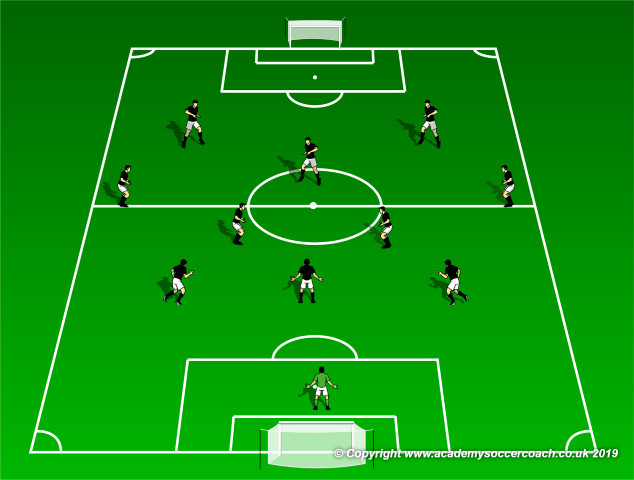
Above is the 3-2-3-2 in a transitional form, i.e. – it’s perfect shape. For me the pro’s are glaring – good balance and connectivity across the width and length of the field and the ability to move two players and gain a numerical advantage in every line. Also, with a slight adjustment, the 3-2-3-2 shape can also become very compact and hard to penetrate:
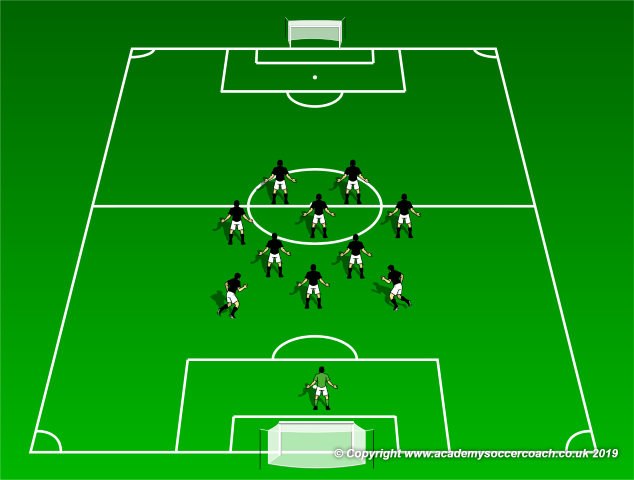
I would recommend some shifting and staggering between the lines to prevent one ball from beating everyone, but given that consideration the 3-2-3-2 could be a formidable defensive shape. In my experience however, there is one consideration to make when using this and any of the other similar shapes with less than 4 players to a line, and that is style of play. These types of formations, and again I refer to them as “ WM” type shapes, HAVE to have players who can control and possess the ball – including accuracy of passes. The lack of the 4th person in the defensive and midfield lines will be exposed by sloppy passing, heavy touches and / or panicked clearances. For example:
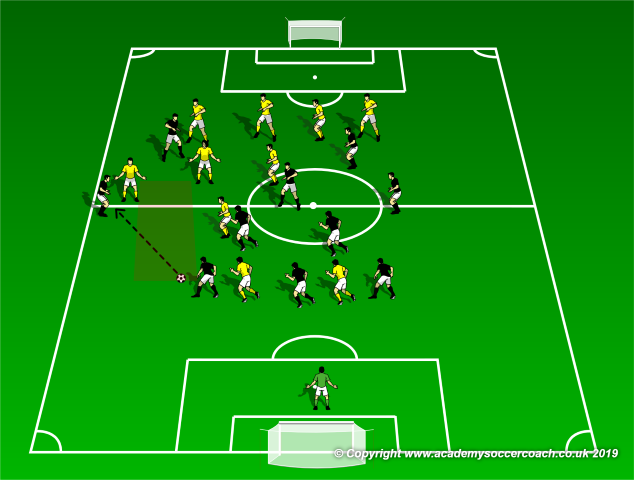
The back line will have to be creative, patient and in control to play out, as even the standard wide outlet commonly used in a 4-4-2 will be covered and dangerous if the ball is turned over ( note the shaded area ). The numerical advantage in the 3-2-3-2 when playing out is actually up the center of the field. While the center of the field is the best distribution point as it easily connects both sides and ends, turnovers here can be disastrous on the scoreboard.
Given the right group of players, the 3-2-3-2 can be a great formation and since it is not common, many teams will have trouble dealing with it initially. IF you have players who are strong on the ball and can possess and pass through initial pressure, try this drill to help implement the 3-2-3-2 or the 2-3-2-3.
Set Up
On a half field, ( as shown below ) 10 attackers in the 3-2-3-2 attack 8 defenders and the keeper. Play starts with the keepers distribution. The 8 defending players may score by dribbling through their choice of 3 stick gates placed across the half line. The two forward attackers must stay in the box, while only one defender must stay behind with them, creating a 7 v 8 outside the penalty area when the defending side has the ball.
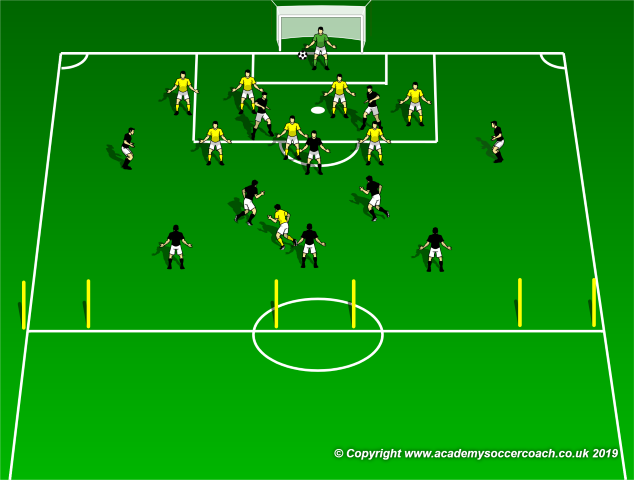
The idea is to shift over and attempt to play out wide. However, since the advantage is actually central ( as shown below ) some simple, accurate passing while holding shape will find the feet of the fwds in the box.
5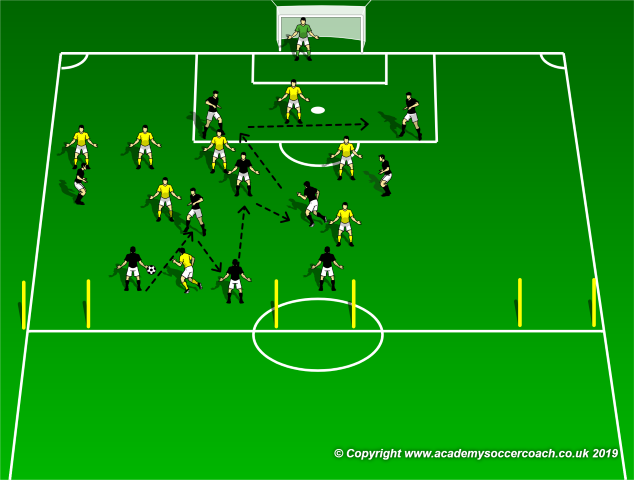
This is the strength of the 3-2-3-2. Once the attacking side is grasping the concept, add additional players to the defending side , eventually progressing into a full field exercise.
Coaching Points
Perfect balanced shape and playing out under pressure are the goals of the WM type formations. The coach should make sure the team in the 3-2-3-2 is keeping control of the ball and using the shape to their advantage. While there is room for creativity here, it is best left for outside backs and the strikers as any free lancing or loss of shape in the middle will create opportunities for the opposing side – the strength in the 3-2-3-2 shape is just that – perfect shape. Good luck!
By Mike Smith
Currently the Head Coach for University Heights Academy Boys Soccer in Hopkinsville, KY , Mike is in his 14th year as a high school head coach with 23 years coaching experience overall and 34 year as a student and fan of the game. He holds a USSF D License.


